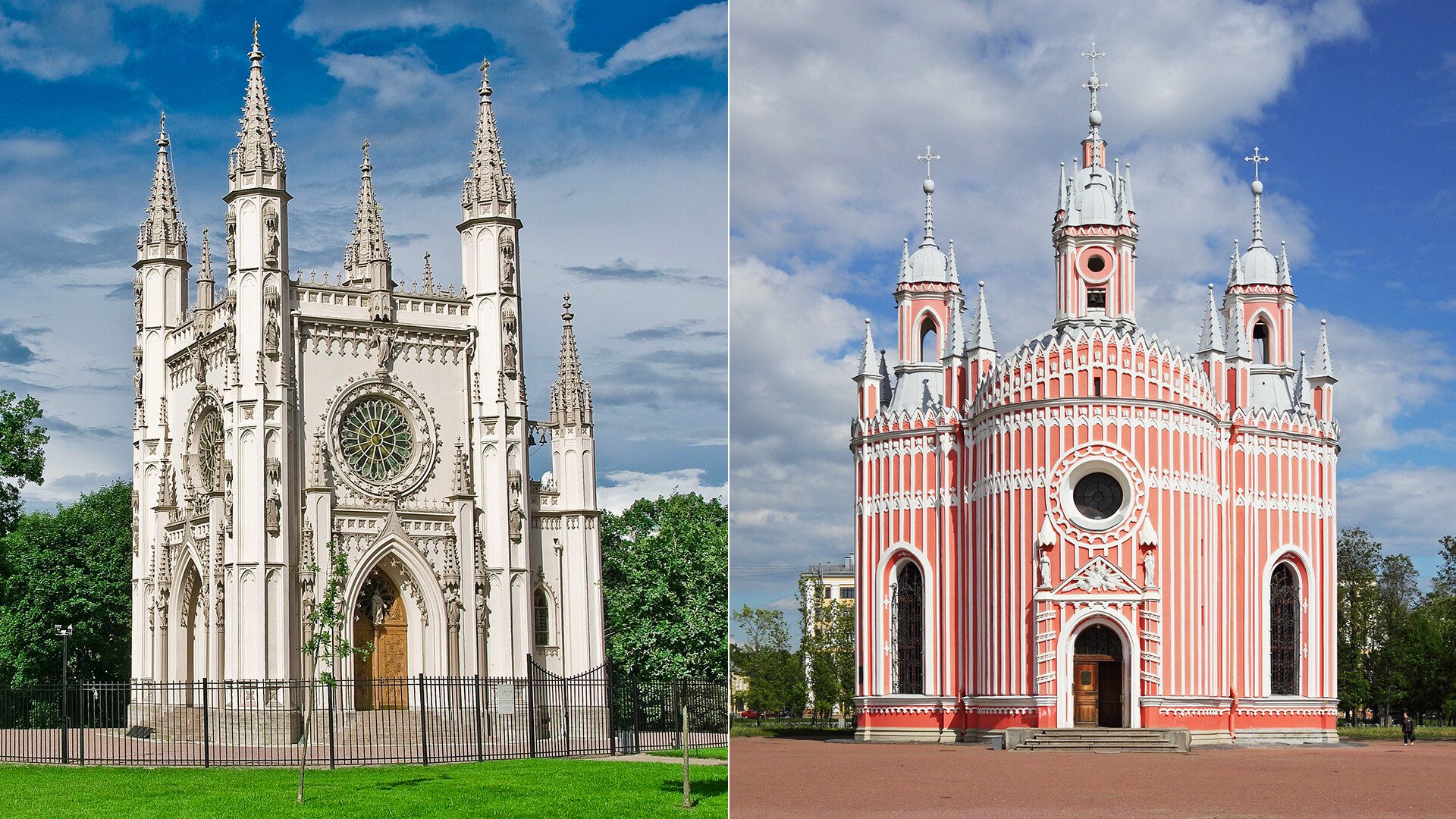
In the 18th and 19th centuries, churches built in the Gothic style began to appear in Russia, something that would seem to be alien to Orthodox Christianity. On Russian soil, this medieval European style incorporated the features of old Russian architecture, as well as Baroque and Classicism, creating a unique symbiosis. The result was the ‘Russian Gothic style’ (otherwise known as neo- or pseudo-Gothic) and below are its most striking examples.

The first buildings in the Gothic style appeared under Empress Catherine II, who was ethnically German. On her orders, this unusual church was built to commemorate the victory of the Russian over the Turkish fleet in the 1770 Battle of Chesme (Turkish: Çeşme). The church is located on the way from St. Petersburg to Tsarskoe Selo and the empress herself often stopped by in summer.
In 1790, court singer Mark Poltoratsky had the Church of the Transfiguration built on his estate in Krasnoye, Tver Region. It was an almost exact replica of the Chesme Church.
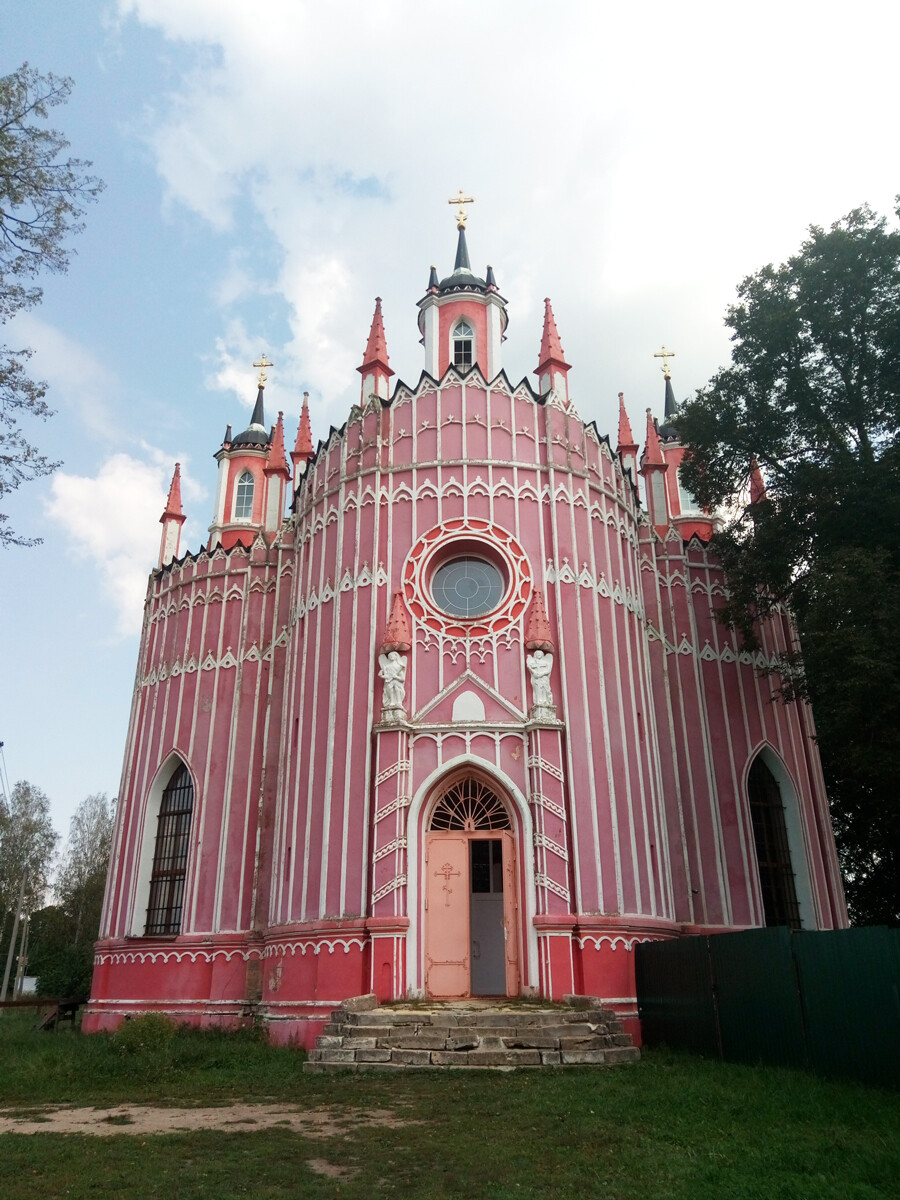
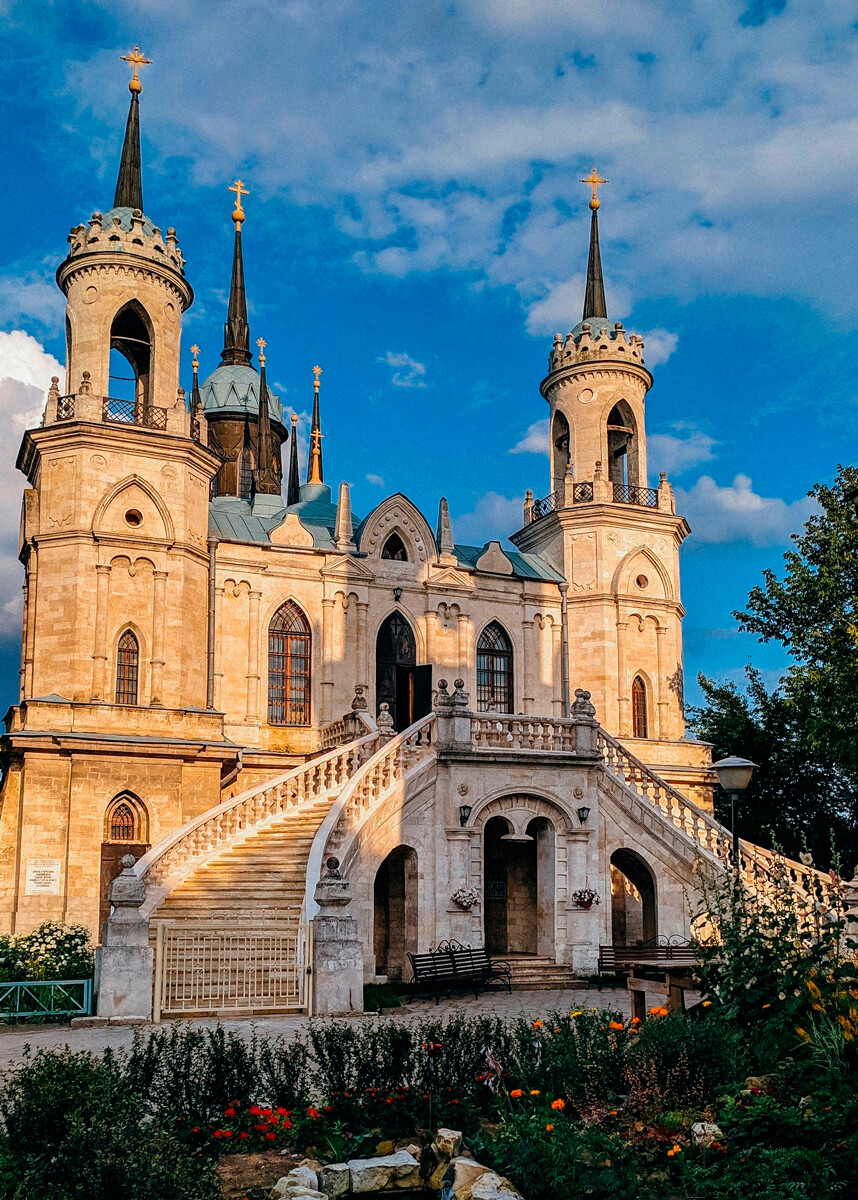
In the 1780s, a church was built at the Bykovo estate outside Moscow that looked more like the palace of a Disney princess. It is not known for sure who the architect was, but the project is attributed to Vasily Bazhenov, who built the palace ensemble in Tsaritsyno and several buildings in the Moscow Kremlin for Catherine II. It might be added that the owner of the estate was General Mikhail Izmailov, who was in charge of construction in Moscow (and was married to a relative of the Imperial Family).
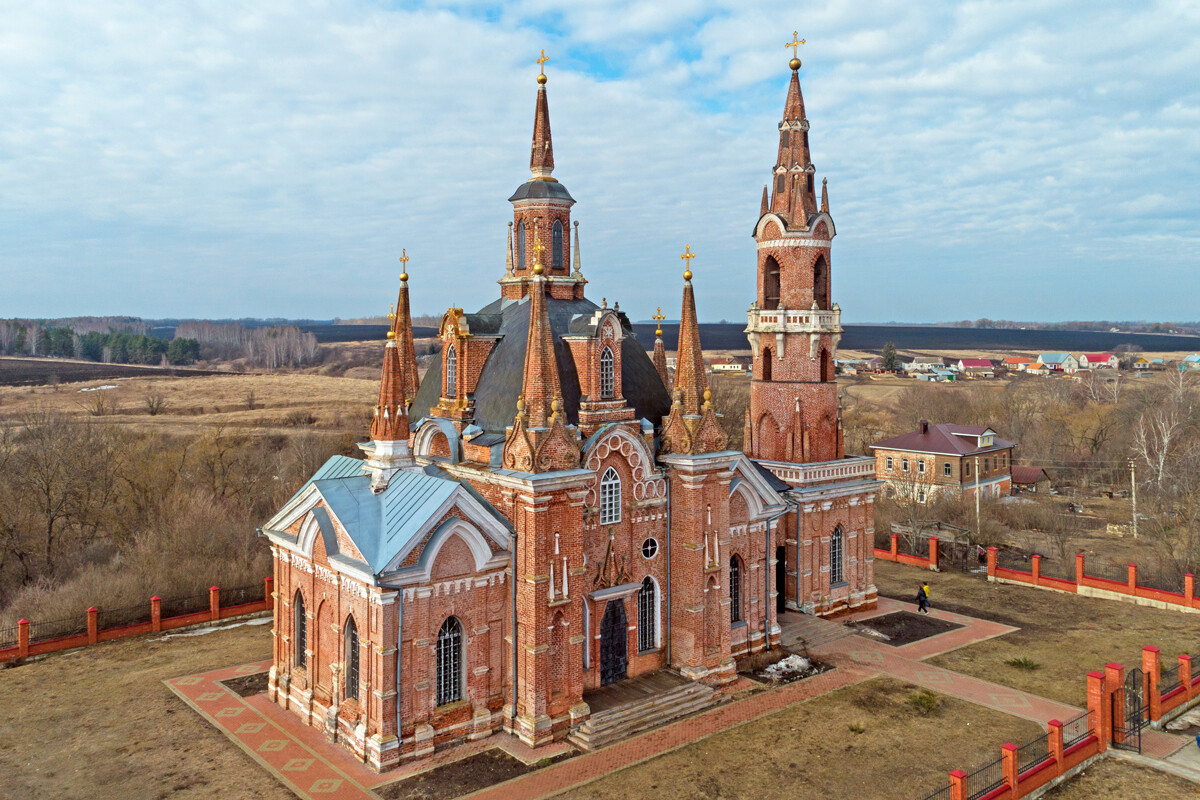
The fashion for the Gothic style also spread to the provinces. In the 1790s, on their Veshalovka estate (now in Lipetsk Region), the Counts Tatishchev, using serf craftsmen, had a church built in honor of the Mother of God of the Sign. This project is also attributed to Bazhenov.
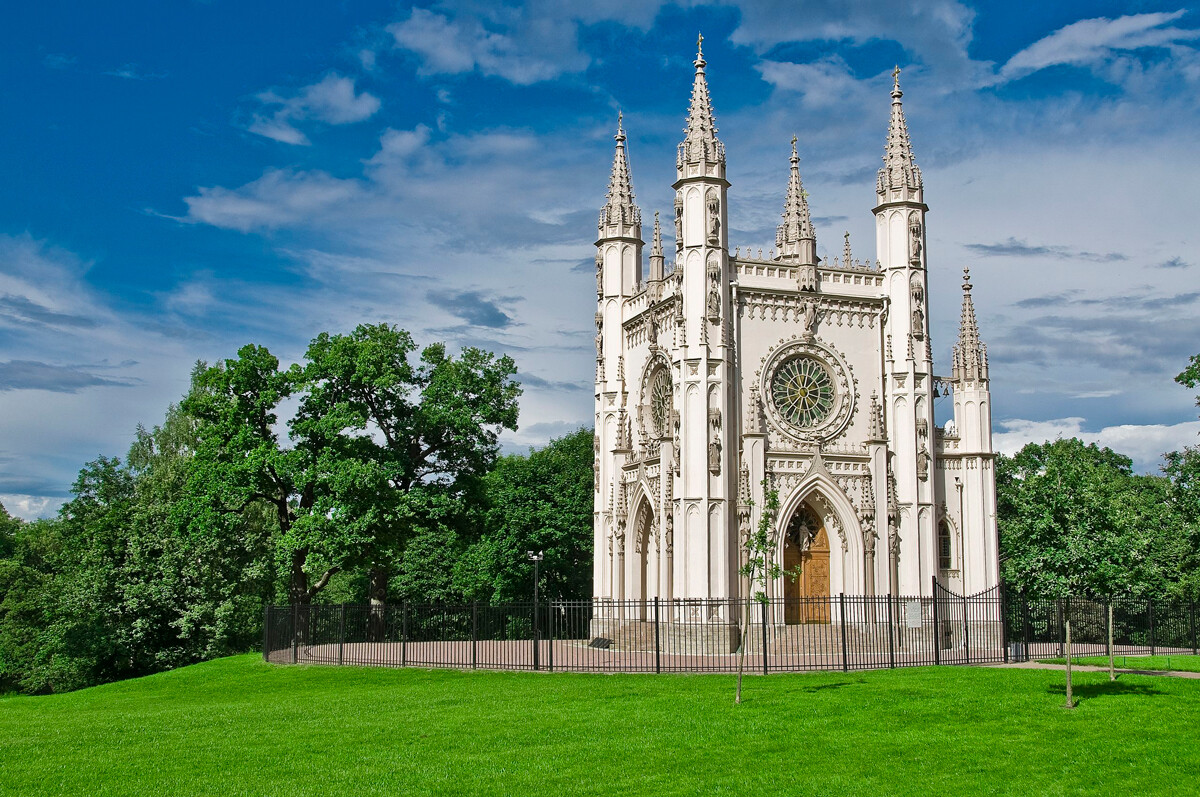
Over time, Gothic architecture became even more popular. In the 1830s, Emperor Nicholas I commissioned a family chapel to be built in Aleksandria Park at Peterhof.
The unusual church, which looks like a miniature replica of a Gothic cathedral, was consecrated in honor of Alexander Nevsky. It was designed by German architect Karl Friedrich Schinkel, who also built Friedrichswerder Church in Berlin. Later, other emperors also liked to stop by the church with their families in summer.
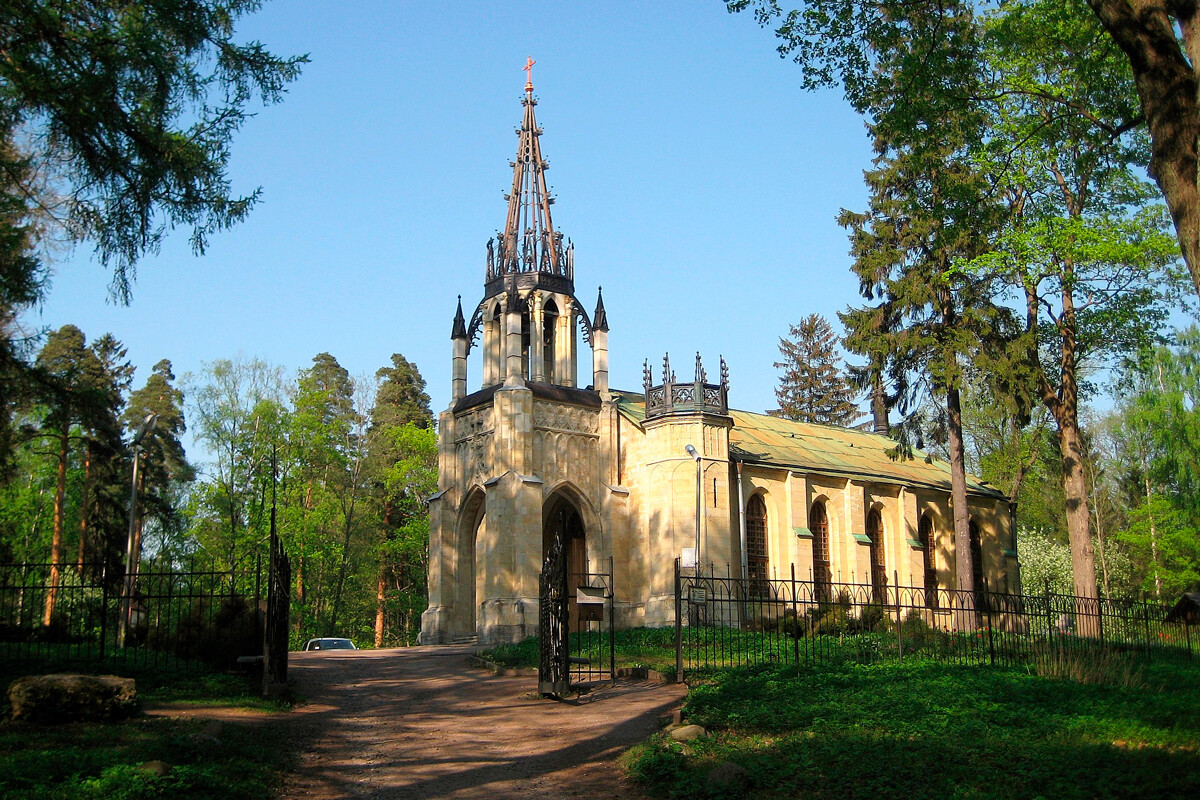
In the 1830s, Countess Varvara Shuvalova had a Gothic church built on her Pargolovo estate north of St Petersburg in memory of her late husband. It was designed by architect Alexander Brullov (the brother of artist Karl Brullov). The church’s unique feature is its conical open-work metal roof.
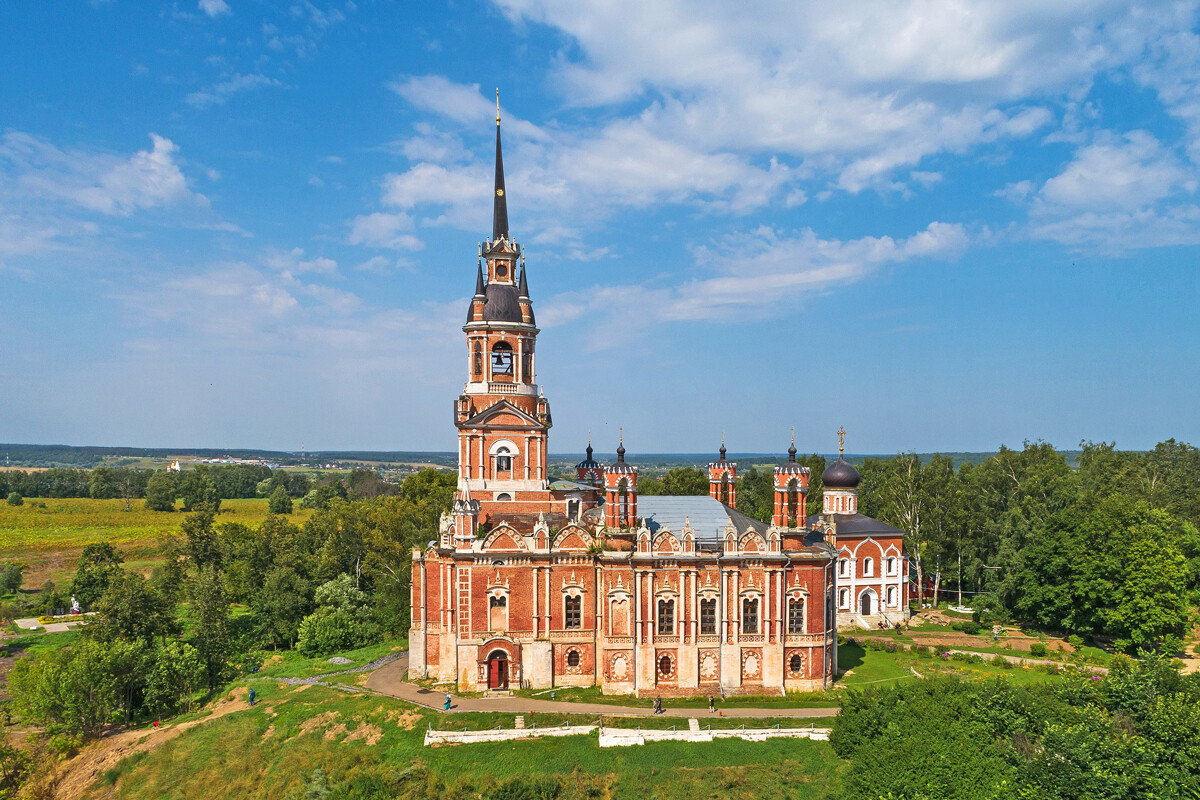
In the early 19th century, it was decided to build a new church in the ancient kremlin of the city of Mozhaysk west of Moscow. The project was drawn up by architect Alexey Bakarev, who skillfully combined a traditional Russian church building with plenty of Gothic decorative features. The church was dedicated to Saint Nicholas the Wonderworker or, to be more precise, to one of his images - Nikola of Mozhaysk, defender of the city. The church was considered to be so successful that Bakarev was subsequently entrusted with rebuilding the St. Nicholas Tower of the Moscow Kremlin in the Gothic style.
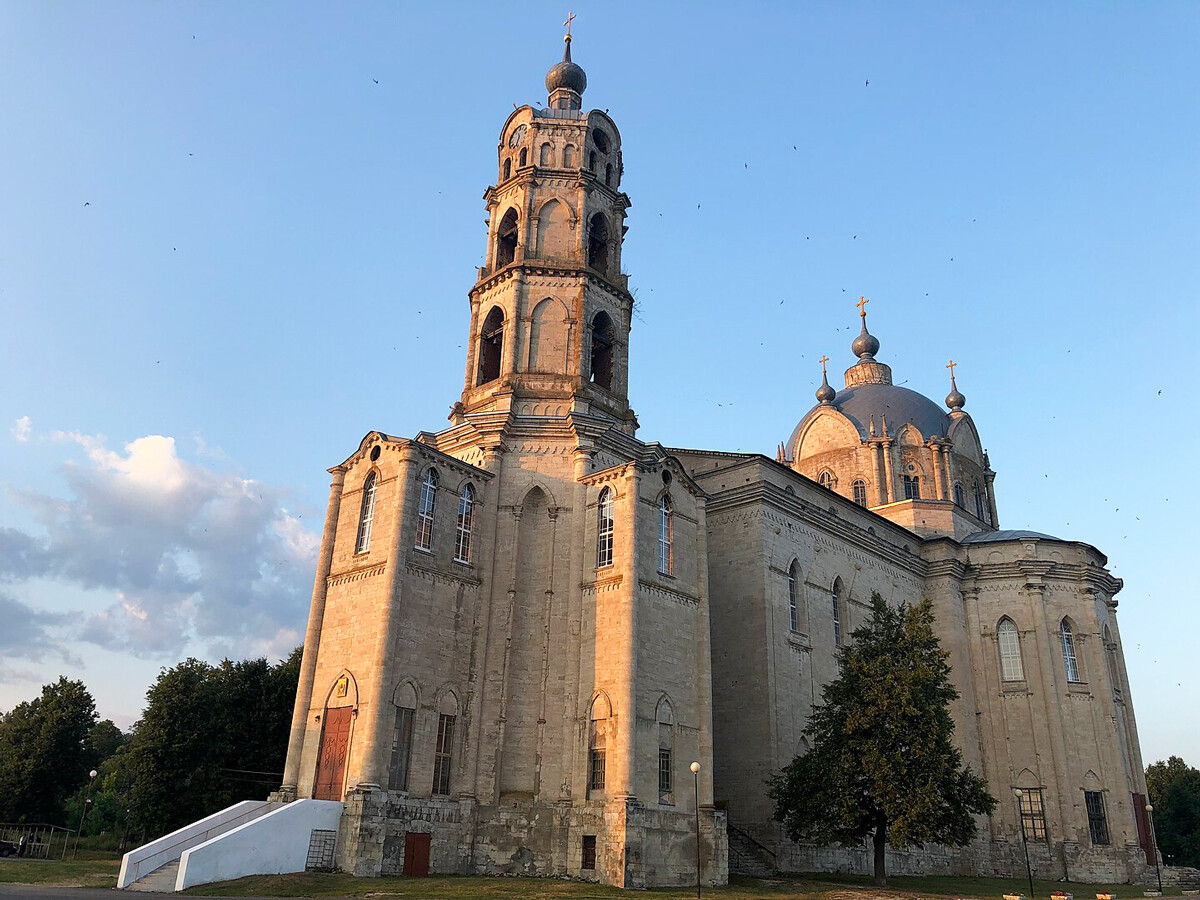
In the town of Gus-Zhelezny, not far from Kasimov, the Batashev family of arms manufacturers and industrialists commissioned a stylish estate and the Trinity Church in pseudo-Gothic style.
The construction, finished in 1868, took over 60 years to complete, owing to the death of the main client who had been allocating the money for it. The project was, once again, attributed to Vasily Bazhenov, but some experts believe that it was designed by Ivan Gagin, a local self-taught architect from Kasimov.
Dear readers,
Our website and social media accounts are under threat of being restricted or banned, due to the current circumstances. So, to keep up with our latest content, simply do the following:
If using any of Russia Beyond's content, partly or in full, always provide an active hyperlink to the original material.
Subscribe
to our newsletter!
Get the week's best stories straight to your inbox